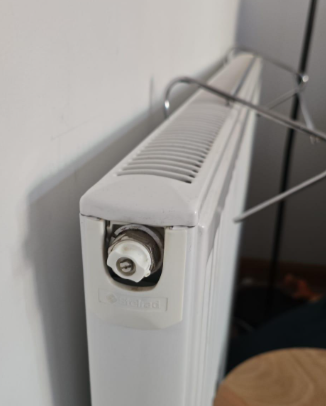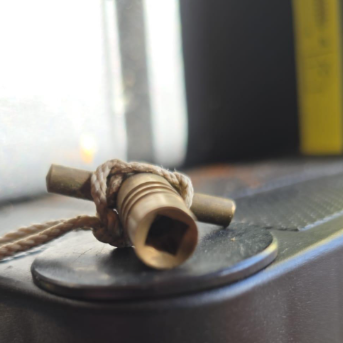Bleeding a radiator
There may be times when you need to bleed your radiator to help ensure it's working effectively.
- If your heating is on, however you find a radiator is cold, or only hot at the bottom, you may need to bleed the radiator. This releases air that is trapped so that the radiator can work better
- If you find that the radiator is warm at top but cold at bottom, this means the radiator needs to be cleaned out as there may be an issue with sludge. This is something that we can do, so please raise a repair for this through your online account or by getting in touch
If you don’t feel comfortable or are unable to do this, please get in touch and we can look into this with you.
- Turn your heating on and walk around your home, feeling each radiator. Be careful—they can get hot! Check for cold spots at the top and listen for any odd gurgling sounds
- When you're going to bleed the radiators, please remember to turn the heating off and allow time to cool
- Get the tools ready, to bleed a radiator you'll need:
- Radiator bleed key (you can get these from most DIY shops)
- Cloth
- Container
- Grab an old towel and a container ready for any drips
- Once the radiator has cooled, find the valve and use your radiator key to loosen the valve slightly. If it’s a bit stiff, use a cloth for a better grip
- Make sure to open the valve just a little—when you hear a hissing sound, that’s the air escaping
- Once the hissing stops and water starts to flow, catch it in your container
- Tighten the valve back up and wipe up any spills
- After you've bled the radiator, make sure you check on your boiler pressure as it may have dropped, if it is below 1.0 when it's switched off then you will need to top up the pressure
- You can find out how to top up your boiler pressure in this article
- If the pressure is fine, then turn on your heating and test the radiators
- If the issue is not fixed, then please get in touch and we can look into this with you
There's no set frequency to bleed your radiator, we recommend only doing it when it's needed and you notice that the radiators are cold at the top only.
- You will need a radiator key, if you don’t have one, you can purchase them any DIY store, this isn't something we provide
- Don’t remove the valve all the way, just enough that you can let the air out and you can hear a hiss sound
- If you don’t feel comfortable or are unable to do this, please get in touch and we can look into this with you
Bleeding radiators is a customer responsibility, you can find out more about repair responsibilities in your tenancy agreement or in this article.







